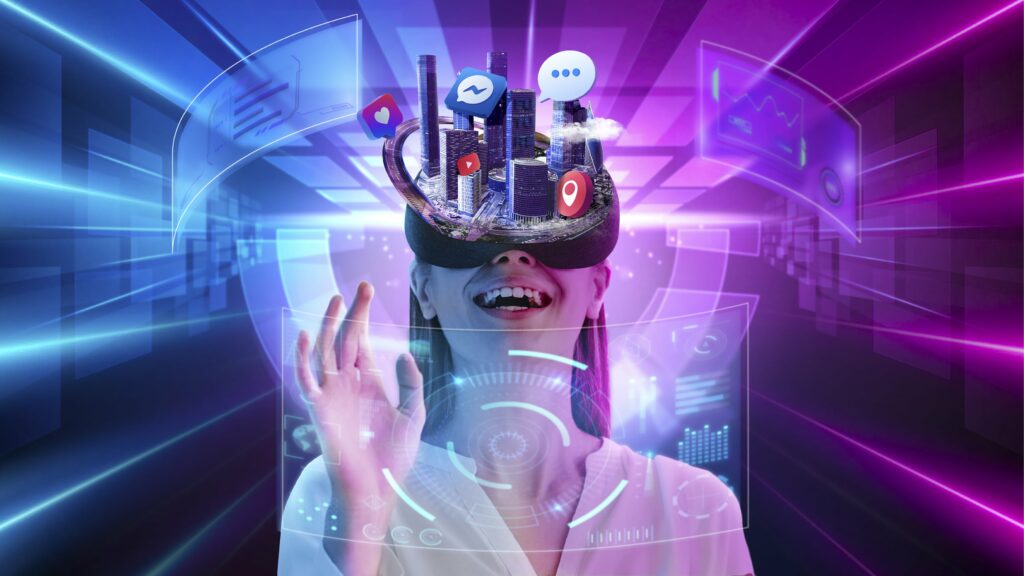Improving the effectiveness and engagement of audit team...
Read MoreThe potential of AR/VR in the gaming industry The potential of AR/VR in the gaming industry is enormous. These technologies
Improving the effectiveness and engagement of audit team...
Read MoreVirtual Laboratory for Improved Understanding of Nano-Fabrication Procedures:...
Read MoreAR Platform for Improved Customer Experience and Sales...
Read MoreEnhancing Customer Understanding with 3D and AR Product Catalog: A...
Read MoreDigital Experience Suite for Auto Manufacturer: Enhancing Online Sales and...
Read MoreEnhancing Customer Understanding with 3D and AR Product Catalog: A...
Read MoreVR-Based Training Platform for Improved Efficiency and Cost Reduction: A...
Read MoreEnhancing Customer Understanding with 3D and AR Product Catalog: A...
Read MoreVR-Based Training Platform for Improved Efficiency and Cost Reduction: A...
Read MoreImproving the effectiveness and engagement of audit team training through...
Read More
The potential of augmented and virtual reality (AR/VR) to create new forms of art and expression is vast and exciting. With these technologies, artists can create immersive experiences that allow viewers to engage with their work in new and innovative ways.
One of the key benefits of AR/VR for artists is that it allows them to create entirely new environments and worlds that would be impossible to create in the physical world. This opens up new possibilities for storytelling and exploration, and it allows artists to create works that are truly unique and groundbreaking.
Additionally, AR/VR allows artists to create experiences that are interactive and engaging, which can make their work more accessible and engaging to viewers. By using these technologies, artists can create works that are not only visually stunning but also deeply immersive and engaging.
Another potential benefit of AR/VR for artists is that it allows them to create works that are more collaborative and interactive. With these technologies, artists can create experiences that involve multiple people, allowing them to create works that are truly collaborative and engaging.
Overall, the potential of AR/VR to create new forms of art and expression is vast and exciting. As these technologies continue to advance, it is likely that they will play an increasingly important role in the world of art and expression, and they will open up new possibilities for how we engage with and experience art.
One of the key ways that AR/VR is being used to create new forms of art and expression is through the creation of immersive experiences. These experiences allow artists to create digital environments that are rich and detailed, and they can be experienced by viewers using VR headsets or other immersive technology.
For example, some artists are using AR/VR to create interactive installations that allow viewers to explore and interact with their work in new ways. These installations can be installed in galleries or other public spaces, and they can be experienced by viewers in real-time, allowing them to become fully immersed in the artist’s world.
In conclusion, the potential of AR/VR to create new forms of art and expression is vast and exciting. As these technologies continue to advance, it is likely that they will play an increasingly important role in the world of art and expression, and they will open up new possibilities for how we engage with and experience art.
The potential of AR/VR in the gaming industry The potential of AR/VR in the gaming industry is enormous. These technologies
How AR/VR is changing the way we experience events and live performances? In recent years, AR/VR technology has started to
AR/VR for environmental conservation and sustainability In recent years, there has been a growing interest in using AR/VR technology for
The potential of AR/VR in creating new forms of art and expression. The potential of augmented and virtual reality (AR/VR)
Is Metaverse the future? Or it’s just another bubble? The concept of a “metaverse” has been around for decades, but
© Copyright to Digital Agents Interactive
© Copyright to Digital Agents Interactive